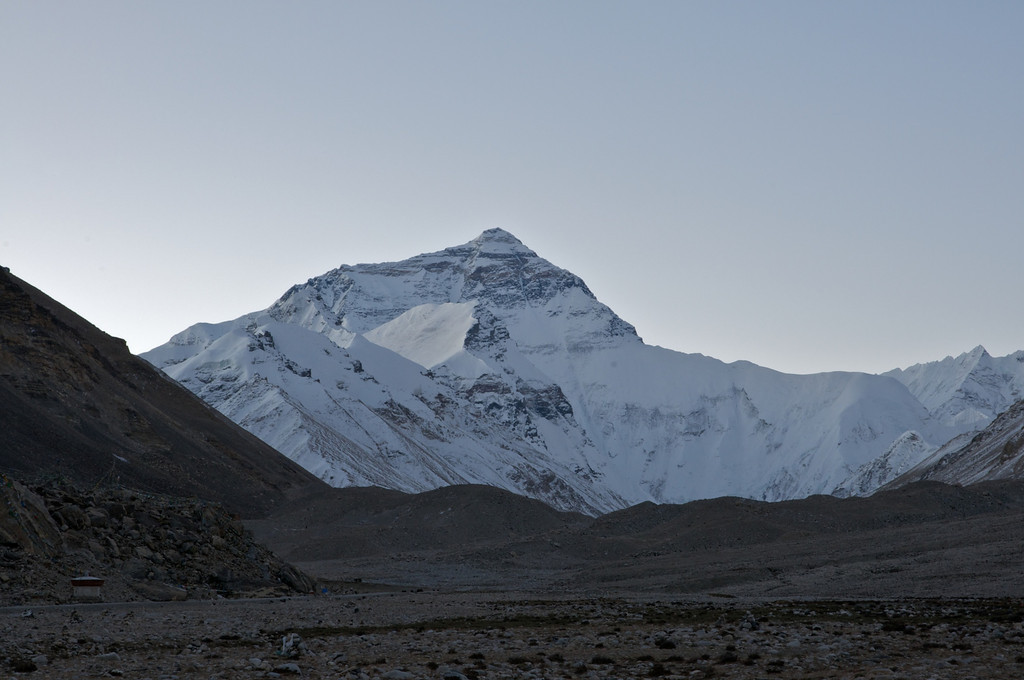In Tibet, “the Roof of the World”, Lhasa is one of the most beautiful cities on earth. At an elevation of 3,650 meters above sea level (11,975 feet), it’s also one of the highest.
While most visitors to Tibet aren’t planning on climbing Mt. Everest, the altitude alone is enough to knock you on your feet, even minus the strenuous climb. Before my visit to Tibet in 2006 I was given plenty of warnings about taking it easy and drinking tons of water. Yet as an experienced skiier with numerous problem-free visits to the peaks of the Rockies and Pacific Northwest, I didn’t pay much attention.
That is, until I landed in Lhasa. I quickly felt dizzy and short of breath. That night, I wasn’t able to hold down much of my dinner (too much information?). I quickly heeded the altitude advice I’d been given, and a day later was back in tip-top shape.

Watching the sunrise over Everest after shaking the effects of high-altitude
If you’re planning a visit to Tibet or any other high-altitude region, here are a few tips to help make your trip a comfortable one. It’s no fun to be stuck in your hotel room when everyone else is visiting the Potala Palace!
Be Active Before You Go: While altitude sickness indiscriminately affects marathon runners and couch potatoes alike, getting your lung capacity up through cardio activity could help you absorb more oxygen at higher altitudes, thus helping you fight some of the effects of being up high.
Drink Plenty of Water: This is simple advice that you’re always supposed to follow, but at high altitudes it becomes even more important. The lower atmospheric pressure means that you lose more water vapor from your lungs as you breathe. Basically, this means that you get dehydrated much faster than you do at sea level. Drinking plenty of water will stave off headaches and help to mitigate your other symptoms.
Take it Easy: It’s important not to push yourself too hard in your first few days. Even if you’re in great shape, your lungs will still be working overtime at high altitude. AsiaTravel trips to Tibet and high-altitude areas always include plenty of time for rest in the first day or two for this reason.
Climb Slow: As you climb to higher altitudes, it’s important to allow your body time to adjust. You shouldn’t plan on climbing more than 1,000 feet per day.
Following these tips might not help you avoid the effects of high-altitude completely, but they should help diminish them enough to enjoy your trip. Most people get over initial discomfort within a day or two.
———-
For more information about the symptoms and treatment of altitude-sickness, the following links are full of great information:
- Travelocity: How to Avoid Altitude Sickness
- Travel Doctor.UK: Altitude or Mountain Sickness
